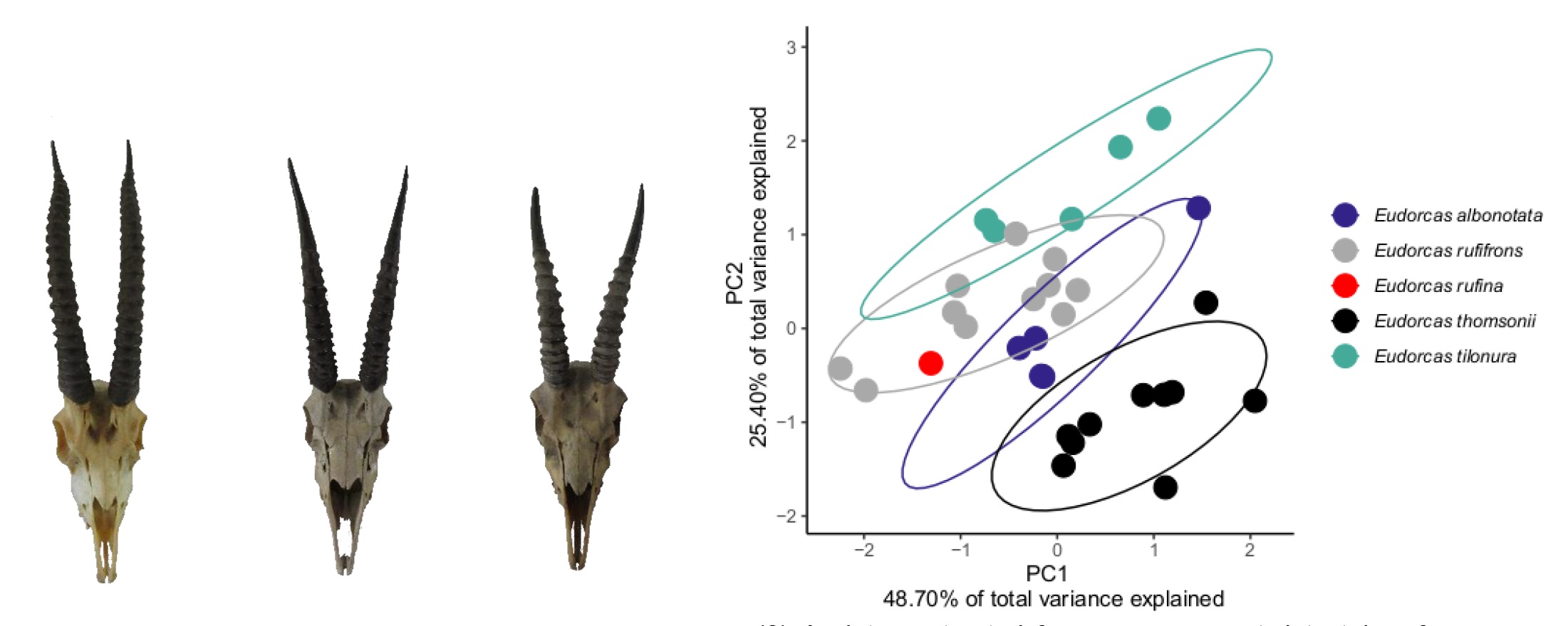by Thea Mainprize, PhD Student, Department of Life Sciences
The Trial of the Red Gazelle
The thylacine, aurochs and countless more, What is another knocking at Heaven’s door? One more quietly met their maker,
The red gazelle (Eudorcas rufina).
Bright rufous pelts – such beauty, such grace! But all we know about are skin and face,
No genetic studies, no records in the wild, Only two specimens worldwide on file.
Three, there once were, shot 19th century, Allegedly Algerian – though this is speculatory, Upon inspection, an imposter! Begone!
One red-fronted gazelle (Eudorcas rufifrons). With the IUCN denouncing its legitimacy1, The red gazelle faded into obscurity,
A true species, or all imposters? Court in session to settle the matter.
“Last expert, please!” The judge demands, I swear my oath and begin at the stand,
“Ringed horns, large pocket for scent glands, Undeniably Eudorcas, no doubt about that”. “It is slightly similar”, remarked I,
“To Thomson’s gazelle (Eudorcas thomsonii), But most features and short, straight horns,
It completely resembles Eudorcas rufifrons.”
But what of its real affinity? Distinct, rufifrons or thomsonii?
Measurements done, the analysis complete, The jury reached a verdict, drum roll please. Several points clustered together,
Eudorcas rufifrons and Eudorcas rufina, Also grouped in the evolutionary tree, Unanimous decision – defendant guilty.
The defence lawyer rumbles, suddenly erupts, “Explain yourself!” The judge interrupts, “Objection, your honour!” Cried he,
“This trial is based only on morphology!
I beg you, your honour, you must reconsider, Else my client be condemned forever,
To the vast depths of purgatory, Remaining anonymous to humanity.”
The judge ponders, slowly speaks, “A trial with DNA is what you seek?”
“Yes, your honour, for anatomy can lie – Birds and bats – unrelated – but both fly.” The judge, moved by impassioned plea, Adjourns the court immediately,
This creature, thought I, imposter or not, Should not be one Father Time forgot.
At time of writing, I patiently await,
DNA results – species or not will they state? The judge arrives, bangs the gavel,
“Order! Order!” The plot unravels, Prosecution ready, the accused tense Defence determined, courtroom suspense, Soon, once again, I take to the stand,
The red gazelle’s fate rests in my hands.

(1) From left to right: The skulls of Thomson’s gazelle (E. thomsonii), red gazelle (E. rufina) and red-fronted gazelle (E. rufifrons). Note the prominent horn rings and large, deep dip in front of the eyes. This is called the pre-orbital fossa and houses important scent glands. These features are hallmarks of the Eudorcas gazelles.
(2) A plot constructed from measurement data taken from skulls of Eudorcas gazelles. This type of cluster analysis, called ‘principal component analysis’ is often used in morphological studies, and when points group together it can be indicative of the same species – as can be seen for the red gazelle (E. rufina) which is nestled within the E. rufifrons group. The two were also grouped in my evolutionary tree based on morphological features.
1. International Union for the Conservation of Nature (2008). Eudorcas rufina (Red Gazelle). Available at: https://www.iucnredlist.org/species/8974/12944313#assessment-information